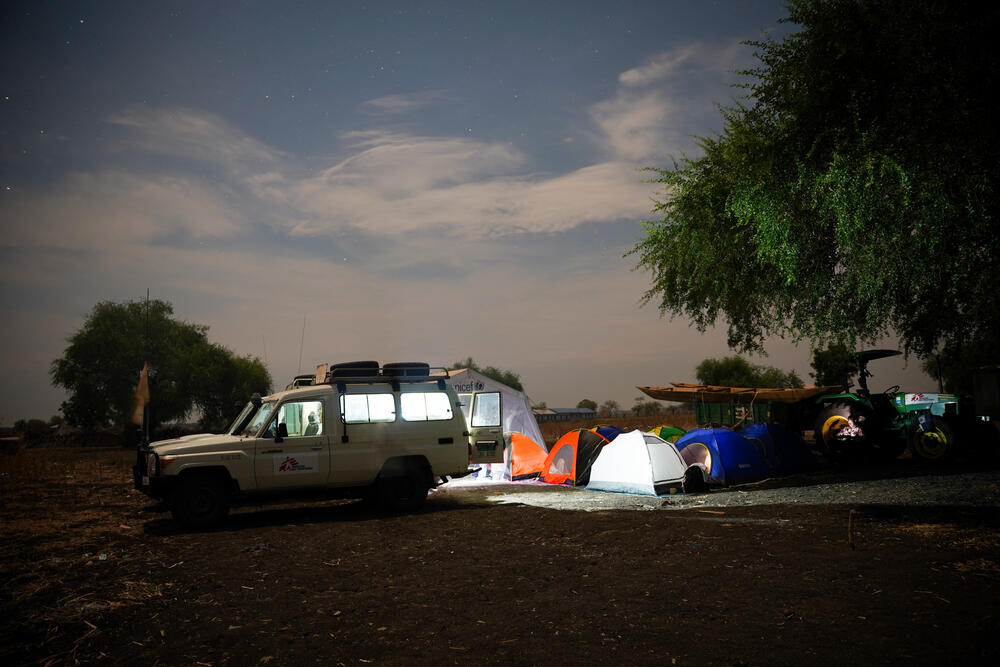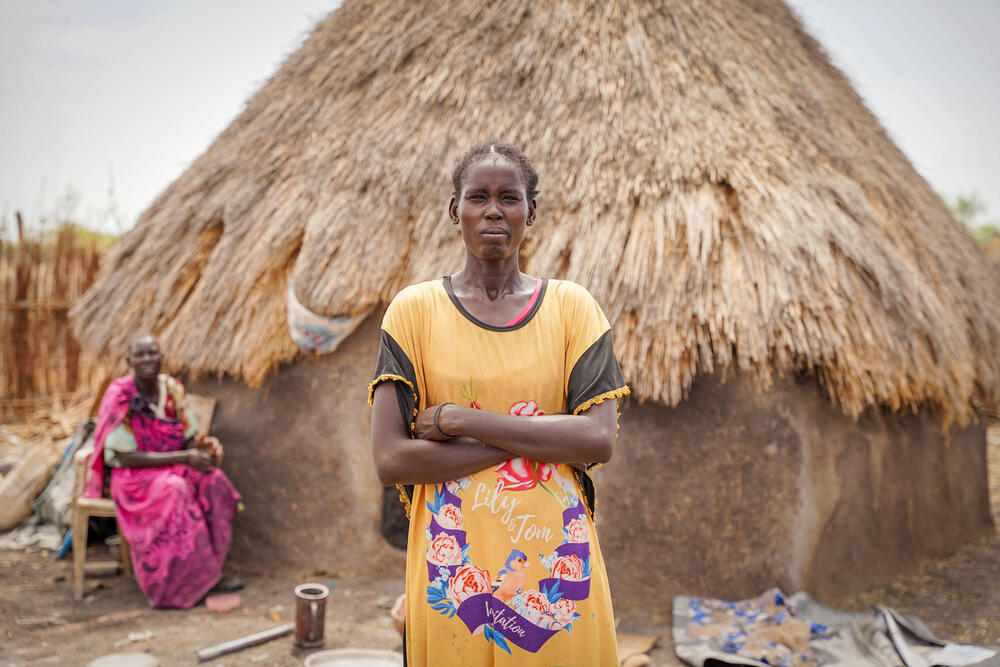South Sudan: Climate change, childbirth and a canoe
In a parched landscape, an MSF tractor roars as it approaches a small village in Dentiuk, part of South Sudan’s Upper Nile State. Strapped to its trailer is something unexpected: a creaking wooden canoe.
“Are you sure we are in the right place?” asks the driver.
“It might not look like it, but when the rains come, this whole area is seriously hit by flooding and the only way to get around is by boat,” says Jorge, a logistics team leader.
“Luckily, the houses in this village are built on higher ground.”
The village is one of 11 in Upper Nile State which are being given canoes by Médecins Sans Frontières / Doctors Without Borders (MSF) to help transport sick people and expectant mothers during the rainy season.
A climate-driven crisis
The rainy season usually runs from June to October, and, although it has not yet arrived this year, seasonal forecasts and climate change projections point to difficult times ahead.
In May, the UN predicted that recent heavy rains in the Lake Victoria basin, coupled with the El Nino event expected later this year, will see parts of South Sudan experiencing severe flooding in the coming months.
Flooding has been a bane to South Sudan for many years, while the worst ever floods in the young nation’s history have occurred in the past four years – a recurring crisis exacerbated by climate change.
During the rainy season, floodwaters sweep away entire villages, destroy crops, drown cattle and severely damage infrastructure, while forcing hundreds of thousands of people from their homes.
Last year, a larger than ever portion of South Sudan was covered in water, and, in some places, the floodwaters have still not receded.
In Bentiu, Unity State, a vast camp for displaced people is effectively an island protected by dykes, while some villages in Old Fangak, Jonglei State, are still under water.
Food and disease
Mary Abur Thon, 26, was displaced from her home in Peldiarowei, Upper Nile State, by floods last August. She fled with her husband, their two children and their extended family to Akoka County, where the situation was marginally better.
“After heavy rains one night, the level of water kept rising and the children could not even walk,” she says.
“We had no food as all the land was covered in water. We walked for days to this place. Then we found it flooded as well, but not as badly.”
For local people, the floods are a disaster, preventing them from accessing food and often isolating them in small and overcrowded areas devoid of infrastructure.
Living outdoors, without mosquito nets and surrounded by the stagnant water where mosquitoes breed, dramatically increases people’s risk of contracting malaria – already the leading cause of death in South Sudan.
£23 could pay for six mosquito nets to protect against malaria
The generosity of people like you means expert MSF medical teams can deliver essential medical care to people across the world.
At the same time, the floodwaters contaminate clean water sources which raises the risk of waterborne diseases such as cholera and acute watery diarrhoea, while overcrowded conditions then make it easy for these infectious diseases to spread.
Despite this urgent humanitarian situation, entire communities are cut off from access to medical care, putting many lives at risk.
Preparing to face the floods
For aid organisations such as MSF, reaching people in need becomes increasingly difficult as the floods sweep away or cover roads, bridges and airstrips.
Against this backdrop, MSF has been helping communities to prepare for the rainy season and ensure that they can continue to access vital medical care.
“When people fall sick here, we have no means of transporting them to a place like [the hospital in] Malakal except by boat,” says Angau Biech, Chief of Aree village, which recently received a canoe from MSF.
“Before, we had to hire boats for this, but now it will be easier for us to ferry people across the river to Kodok. Then MSF comes for them there.”
At the same time, MSF has been putting critical medical supplies in position in locations across the country with a focus on the most vulnerable areas.
By making sure that medications and supplies to treat malaria, waterborne diseases and infectious diseases are safely stored and readily available, MSF teams hope to be able to contain any future outbreaks early on and stop them from spreading.
Hours from maternity care
Lastly, to help communities provide the first line of care in emergency situations, MSF teams are also training key members of remote communities in medical skills.
This ranges from basic first aid to advanced care and includes supporting pregnant women during labour and assisting deliveries.
“Labour is not a process that can be slowed down once it starts, yet in these areas the nearest health facility is often several hours away and much longer in times of heavy rains and flooding,” says Dinatu, MSF’s lead midwife in Malakal.
“We are training traditional birth attendants in the villages to give them extra skills to support expectant mothers as they rush them to the nearest health facility.”
Given the scale of flooding in the past four years, it seems that massive floods are a new reality for South Sudan.
Addressing the myriad complex challenges this raises will require concerted efforts by authorities, donor organisations and the humanitarian community – both to ensure that people have access to medical care and to anticipate and address the consequences of future climate change in the region.
MSF and the climate emergency
The climate emergency is also a healthcare emergency. When extreme weather events occur, it is the most vulnerable people who suffer the most.
This crisis isn’t only about the catastrophic cyclones and typhoons that hit the headlines. This is about the spread of deadly diseases that can follow. The increasing risk of drought and famine. Of rising water levels. Desertification. The mass displacement of people from their homes…
In every way, climate change is a major humanitarian emergency.




